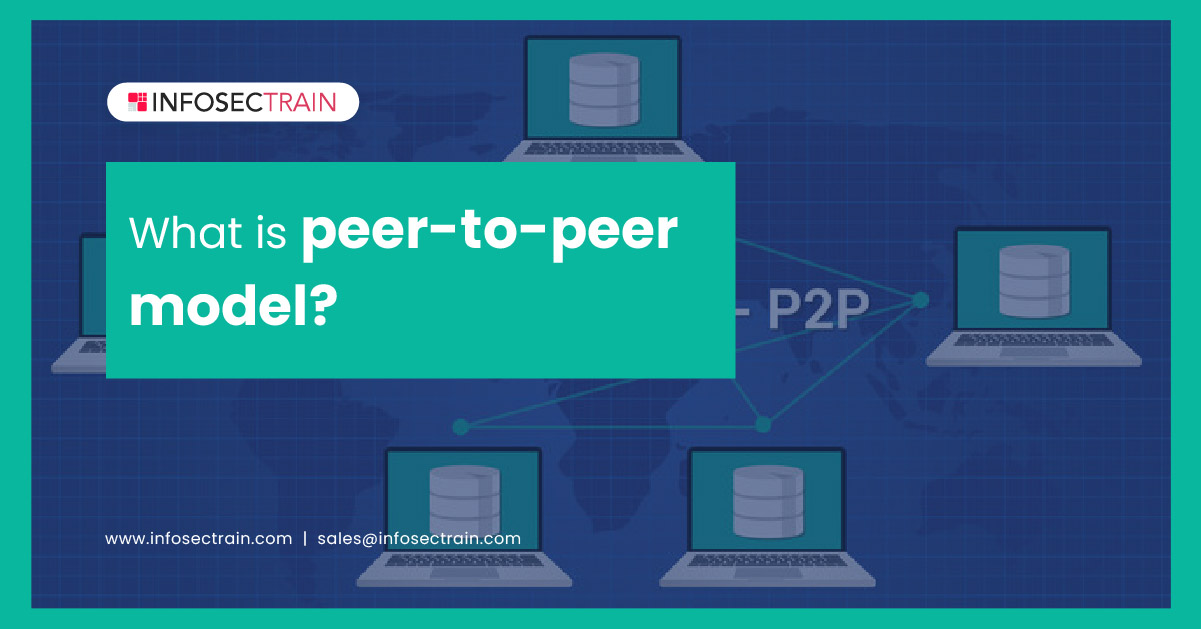What is peer-to-peer model?
When we talk about networks, the first thing that comes to mind is how data transfers from one device to another. Sharing digital information and resources is a vital part of information technology. A peer-to-peer (P2P) network connecting devices may improve connectivity and access to shared assets, allowing your organization to run more efficiently.

Table of Contents
Network Models
Peer-to-Peer Model
Types of Peer-to-Peer Model
Unstructured peer-to-peer model
Structured peer-to-peer model
Hybrid peer-to-peer model
Advantages of Peer-to-Peer Model
Application of Peer-to-Peer Model
Network Models
Network models are communication channels for data transfer. There are two types of channels for data transfer and resources.
- Peer-to-peer model
- Client-server model
So, here in this article, let’s discuss a peer-to-peer model.
Peer-to-Peer Model
When devices are linked together, they share resources without requiring separate server or server software. To understand the peer-to-peer model, let’s take the example of a torrent. As we already know, torrent software is used for downloading movies and files. How is this peer-to-peer model working in this torrent file? Suppose your organization has four personal computers, PC1, PC2, PC3, and PC4. In PC1, when we use torrent, PC1 checks all devices on the internet running that particular software that has torrent. As soon as PC1 finds any other PC that is running torrent software, it will ask for the file it wants to download. Suppose PC2 is running that software and it is nearest to PC1, so this PC1 asks PC2 to give him that file, and PC1 will download that file. But what if PC2 does not have that file? Then the data or the query will be forwarded to the next device, PC3. If PC3 has that file, it will revert to PC1 and give him that file access. This entire process is known as a peer-to-peer model in networks.
Types of Peer-to-Peer Model
- Unstructured peer-to-peer model
- Structured peer-to-peer model
- Hybrid peer-to-peer model
1. Unstructured peer-to-peer model : As the name suggests, devices are connected randomly in networks in this type of model. This model is easy to build since there is no structure imposed. However, because it is unstructured, it is hard to discover information.
2. Structured peer-to-peer model: In this model, devices are connected in a specific topology. Distributed hash tables are commonly used to construct structured networks. The software used to build a structured peer-to-peer model integrates the network’s virtual layer into a predefined structure.
3. Hybrid peer-to-peer model: This model is the combination of the peer-to-peer model and the client-server model. There are numerous types of hybrid networks, and a popular hybrid network uses a central server to help users locate each other.
Advantages of Peer-to-Peer Model
Due to its architecture, a peer-to-peer model offers many advantages to its user, including:
1. Easy to maintain: A peer-to-peer model has no server in between their devices. So maintaining this type of network is very useful and easy to handle.
2. Cost-effective: This model doesn’t require a particular server for a specific device, which reduces its cost. It does not demand the use of a network operating system or the services of a full-time System Administrator.
3. Easy file sharing: A strong peer-to-peer model can instantly distribute files over long distances. You can access your files from anywhere.
4. Adaptability: The peer-to-peer model can simply expand to add new customers. Because of this advantage, these networks are more adaptable than the client-server model, and its scalability is one of its most appealing features.
5. Efficiency: Developing a peer-to-peer model enables collaboration amongst devices with different resources that can benefit the entire system.
Application of Peer-to-Peer Model
1. File sharing: The activity of offering files and allowing others to obtain them over the internet is known as file sharing. File sharing is based on the peer-to-peer network concept, in which clients’ personal computers are considered peers in the network.
2. Bioinformatics: Peer-to-peer networks have also begun to capture the interest of scientists and researchers, particularly those working with extensive data, such as bioinformatics. Peer-to-peer networks can execute huge systems that deal with extensive data.
3. Artificial intelligence: Swarm intelligence (SI) is an artificial intelligence method focused on observing collective actions in fragmented, self-organized systems. A peer-to-peer network can be used to develop swarm intelligence, with each peer referring to a single person.
4. Grid computing: Grid computing is a growing computer model that allows for high bandwidth processing. Grids utilize the resources of several different computers (peers) connected by a network to solve large-scale calculation problems, usually over the Internet.
Final Thoughts
Information technology relies heavily on the sharing of data and resources. A peer-to-peer (P2P) model can help your organization grow more efficiently by boosting connectivity and access to shared resources. Peer-to-peer computing is a novel technology that constantly develops and finds new uses, and as more areas adopt it, it is expected to become more essential. Check out InfosecTrain to know more about the peer-to-peer model.






 1800-843-7890 (India)
1800-843-7890 (India)